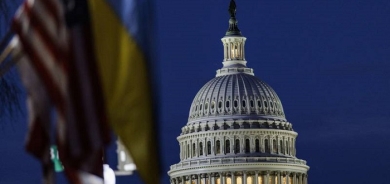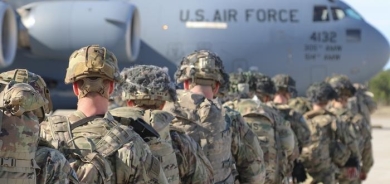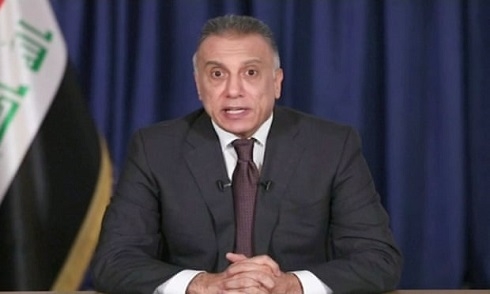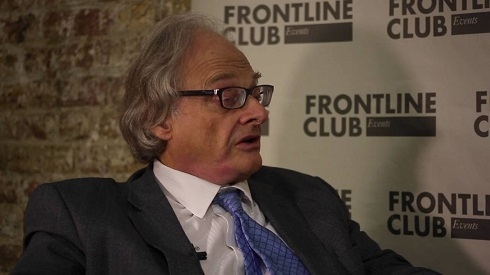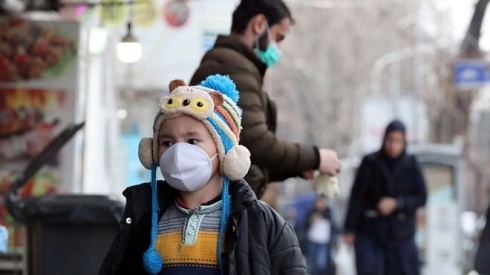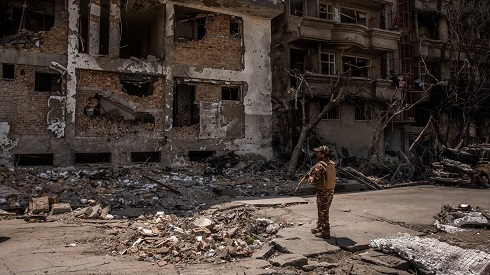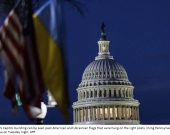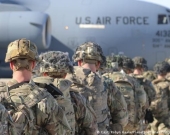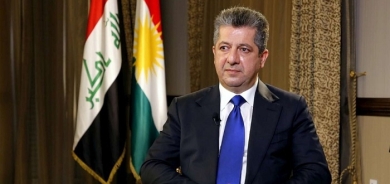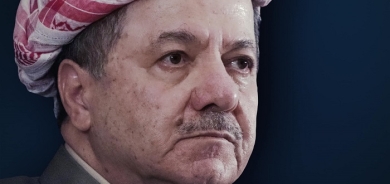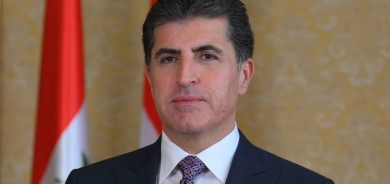Iraq’s Shia militias are beating back ISIS. But are they the country’s next big threat?
March 26, 2015
From Media
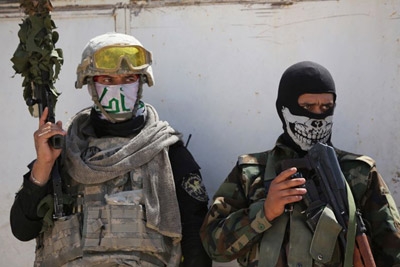
But when ISIS fled Amerli, many of the forces that moved in were not uniformed Iraqi Army soldiers, but Shia militias. The numerous and well-armed militias, crucial allies of the Iraqi Army in fighting ISIS, are nonetheless outside of the state's control. And when they moved into Amerli, they brought something other than liberation.
The Shia militias that overtook Amerli from ISIS, according to an investigation by Human Rights Watch, burned and destroyed thousands of buildings in dozens of predominantly Sunni villages in the Amerli area. They abducted at least 11 people, and probably many more. The goal, HRW's local sources say, was clear: push the Sunnis out in an act of ethnic cleansing.
The story of Amerli is a microcosm of one of the country's largest problems. These Shia militias, now larger than the national army, are one of the most effective ground forces against ISIS. They're also deeply sectarian, linked to and in many cases controlled by Iran. Given free rein, they could exacerbate the very sectarian killing that has fueled years of chaos in Iraq and contributed to ISIS's rise, and could undermine Iraq's struggling efforts to find a solution to the cycle of violence.
The militias learned how to kill during the Iraq war, and were ready to fill a need for the Iraqi state
Iraq had a problem it needed to solve: its army has about 48,000 combat troops, but it needs many more soldiers in order to not just push back ISIS from northern Iraq, but to hold the towns ISIS had seized and restore them to order. The Iraqi state is too weak to build up a larger army in time to meet the immediate need. So its solution was to allow the growth of the Shia militias, based mostly in the country's south, where they had grown battle-hardened from years of bloody sectarian conflict.
Today, there are somewhere between 70,000 and 120,000 soldiers in Iraq's Shia militias, sometimes called Popular Mobilization Units or Special Groups. The militias operate in conjunction with official forces but maintain separate command-and-control structures.
Go back to June 2014. ISIS had just swept northern Iraq, taking Iraq's second-largest city, Mosul. The Iraqi Army was collapsing under mass defections. In response, Grand Ayatollah Ali al-Sistani, the leading Shia religious authority, called on Iraqi men to take up arms to fight ISIS. Some militias had already been mobilizing before Sistani's call (partly to fight in Syria at Iran's behest), but his message jumpstarted the process massively.
Many of the militias were holdovers from the Iraq War, when they targeted US troops and their allies during the post-invasion insurgency and committed atrocities against Sunnis. While the groups had largely disarmed since 2008, they had little trouble reconstituting themselves. Some are linked to formal Iraqi political parties.
A number of the groups have also been supported by Iran.
"Let's call a spade a spade here: the Iranians are running the show," Phillip Smyth, a University of Maryland researcher whose work focuses on Shia militias, explains. Iran arms many of the groups; Qassem Suleimani, the commander of Iran's elite Quds Force, is often said to be leading the overall militia strategy.
The Iranian influence clear if you take a look at some of the bigger militia groups. The Badr Organization has "tens of thousands of fighters" on its own, according to Smyth. It's also a political party with seats in Iraq's parliament; many of its armed wing members serve in Iraq's military, as well. And, Smyth says, its long history of working with Iran suggests that "for all intents and purposes it should be considered an extension of the Iranian Revolutionary Guard Corps."
Kat'aib Hezbollah (KH) is a State Department–designated terrorist organization — a label it earned by targeting US-led coalition forces and Iraqis who worked with post-invasion government during the US's Iraq War. During that time, KH "began receiving more sophisticated training and sensitive equipment than all other Iranian proxies in Iraq," according to Smyth. It has admitted to fighting on Iran's side in Syria.
The militias are bringing short-term success against ISIS, and setting up long-term problems that could be disastrous
Shia militias are, at their core, sectarian organizations: they fight for Iraq's Shia majority, not for all of Iraq. This could corrode Iraqi Prime Minister Haider al-Abadi's campaign to build an inclusive Iraqi government — the only way to ensure the defeat of Sunni militant groups like ISIS in the long run.
But the Iraqi government is addicted to these militias, because they win in the short term.
"Everywhere [the Iraqi Army] has won a battle, it's been either a small-scale engagement ... or it's been an attack led by the Shia militias," Michael Knights, the Lafer Fellow at the Washington Institute for Near East Policy, said in February.
Once they have retaken that territory, though, they have often targeted the Sunni Iraqis they were meant to liberate with violence.
"Abuses by militias allied with Iraqi security forces in Sunni areas have escalated in recent months. Residents have been forced from their homes, kidnapped, and in some cases, summarily executed," Human Rights Watch wrote in February.
"We're not talking about people who use laser-guided munitions," Smyth says. "They shell the hell out of a place, and it gets depopulated."
This isn't just a humanitarian problem. When Shia militias massacre and displace Sunnis, those Sunni communities become less likely to turn against ISIS and cooperate with Iraq's security forces. Without their support, it'll be immensely hard, if not impossible, to fully root ISIS out of that Sunni-majority territory. ISIS fighters will be more able to melt into the population and evade capture, freer to reconstitute themselves as a Sunni insurgent group even if ISIS's formal caliphate has been destroyed.
Shia militias are far from alone in committing human rights abuses. "While there have been documented abuses by the militias, in a very cold sense, they appear to be relatively proportional to those committed by other groups fighting in Iraq," Douglas Ollivant, national security council director for Iraq from 2008 to 2009 and current managing partner at Mantid International, writes at War on the Rocks. That doesn't include ISIS, whose brutality of course far outstrips any Shia militia's.
Regardless, though, Shia militia atrocities are a real problem — and in many ways symptomatic of the huge long-term threat they pose to Iraq.
The militias threaten Iraq's long-term stability
It seems increasingly likely that eventually the Iraqi government, the militias, and the Kurds will take back the territory held by ISIS. But that will not solve the underlying problems in Iraq that led to ISIS's rise, and these Shia militias may actually make those problems worse along the way.
"It may well take one to two years to reduce [ISIS's] defenses in cities like Mosul, Tikrit, and Fallujah," Ollivant writes, "but the ultimate outcome is no longer in serious doubt."
But what then?
ISIS's recent rise is, in many ways, an extension of the Iraqi civil war that began after the 2003 US-led invasion. Those years of bloody fighting between the Shia majority and Sunni minority widened divisions that still have not healed. Nouri al-Maliki, the prime minister from 2006 to 2014, made this worse by excluding Sunnis from many important government posts and harshly repressing Sunni dissent. ISIS used that discontent to recruit and build at least tacit support among civilians.
Unless Iraq manages to convince the Sunnis that the central government takes their interests seriously, that a government supported by the Shia majority can also serve Sunnis, ISIS's remnants or another, similar group could rise again. But Shia militias are sending Sunnis the opposite message: that the Iraqi government is something to fear and even resist.
"If you have these groups now dominating the system, openly," Smyth says, "what does that say? How could a Sunni resident feel any more included in the post-ISIS aftermath?"
The militias' growing role will also extend Iran's problematic power and influence in Iraq. Tehran will still be organizing and supporting a parallel governing apparatus, one that can be mobilized to undermine the Iraqi government if the Iranians, who have a clear interest in a sectarianized Iraq, don't like the direction of government policy.
"No question [ISIS] is both more heinous a group than any Shia militia and a greater short-term security threat," Kirk Sowell, the principal at Uticensis Risk Services and an expert on Iraqi politics, writes. "But what makes Iran-controlled, [head of KH] Abu Mahdi al-Muhandis–commanded Shia militias a greater long-term threat is they are inside the state."
Some Shia Iraqi voters, excited by the militias' rising power and successes against ISIS, might even reward the political parties associated with those militias, such as the Badr Organization, with more seats in Parliament. That would further entrench the power of groups that are not just Iran-linked but are dangerously sectarian.
"It is very possible that the political wings of [militia] Asaab al-Haq and the Badr Corps could greatly, even exponentially, increase their vote share," Ollivant writes.
If these hardline Shia political parties end up gaining seats in Iraq's parliament, they could effectively block any new policies designed to address Sunni grievances. Victory over ISIS on those terms could, in the long run, end up looking like defeat, as well.
VOX

